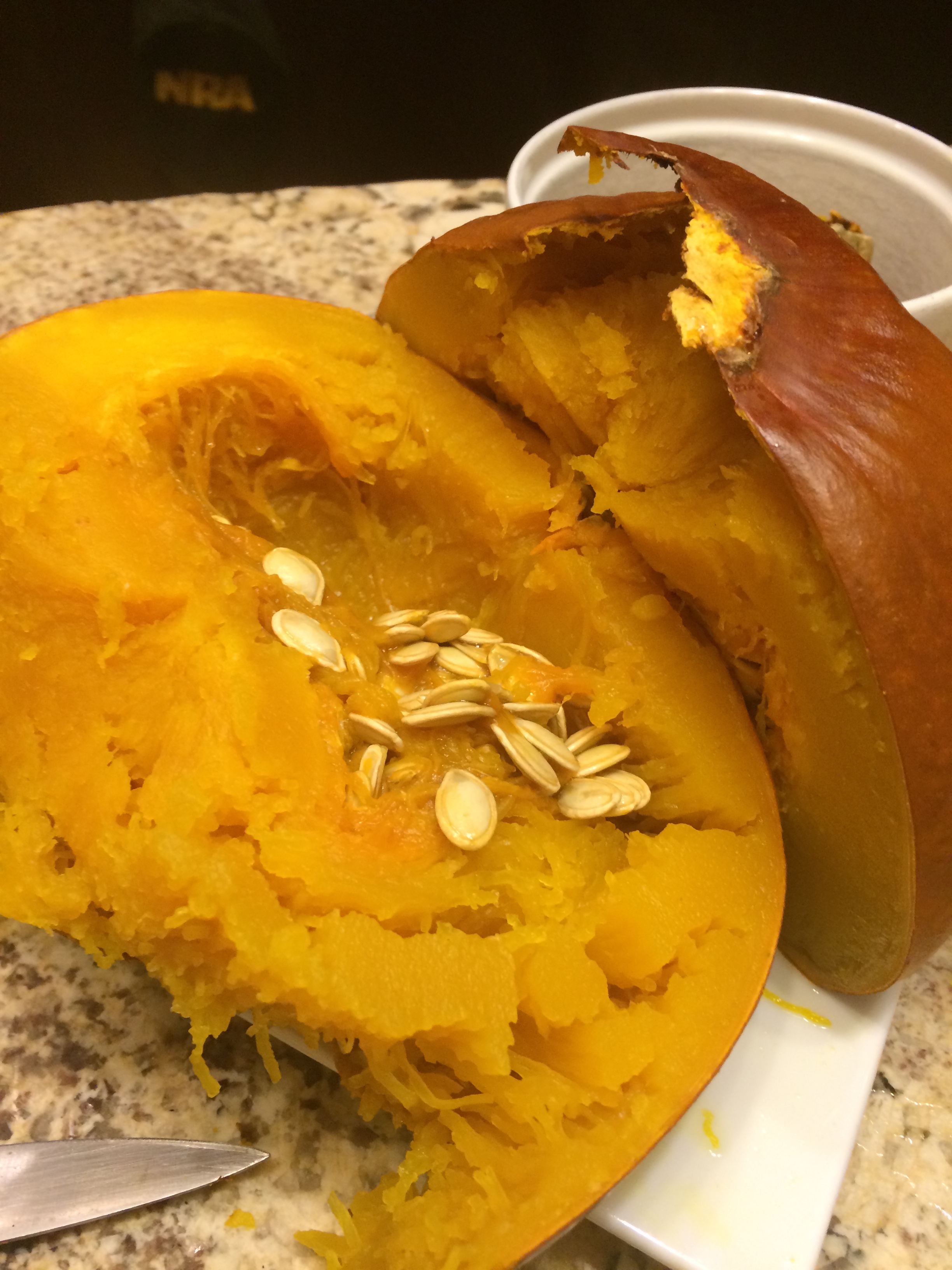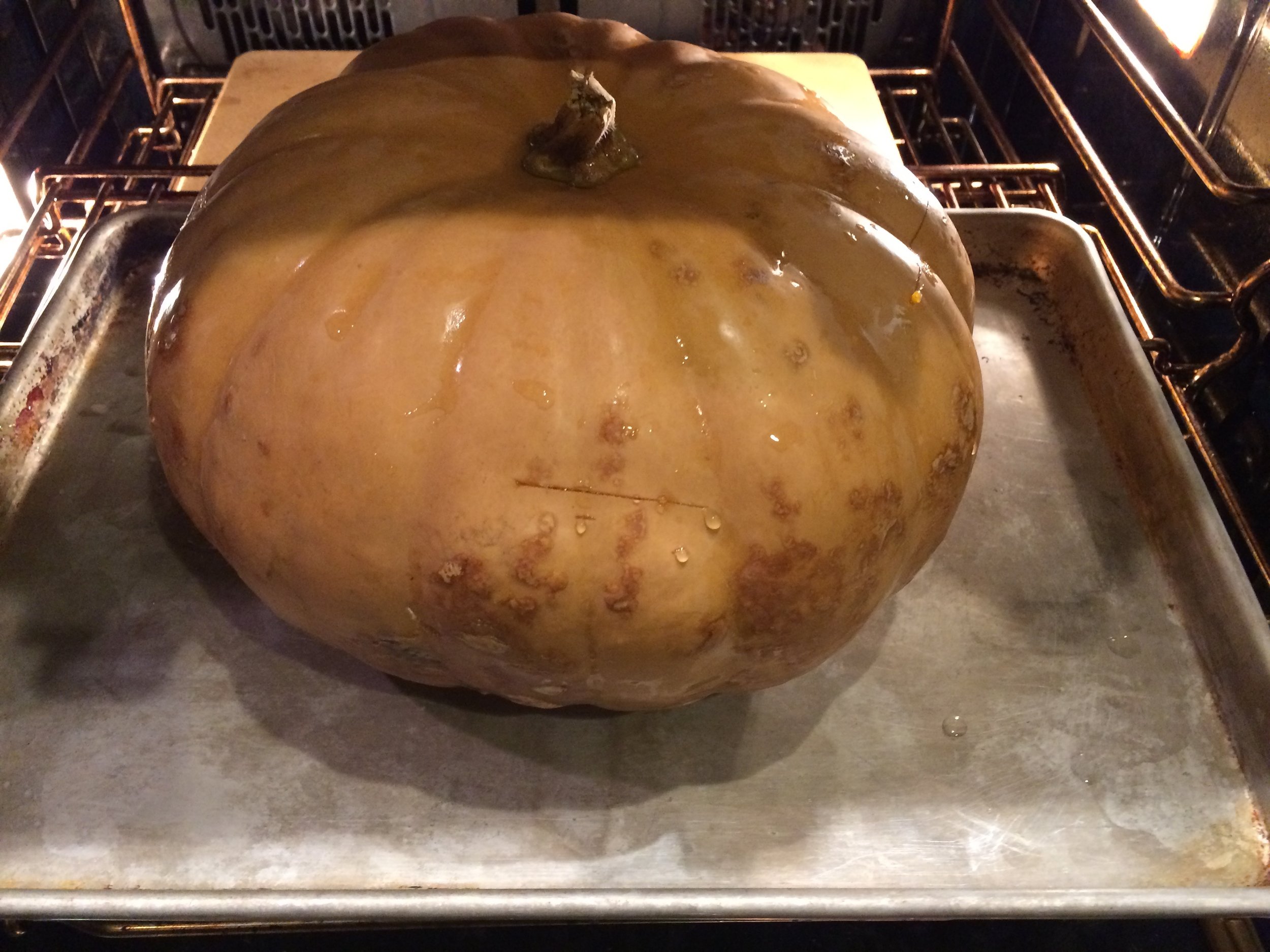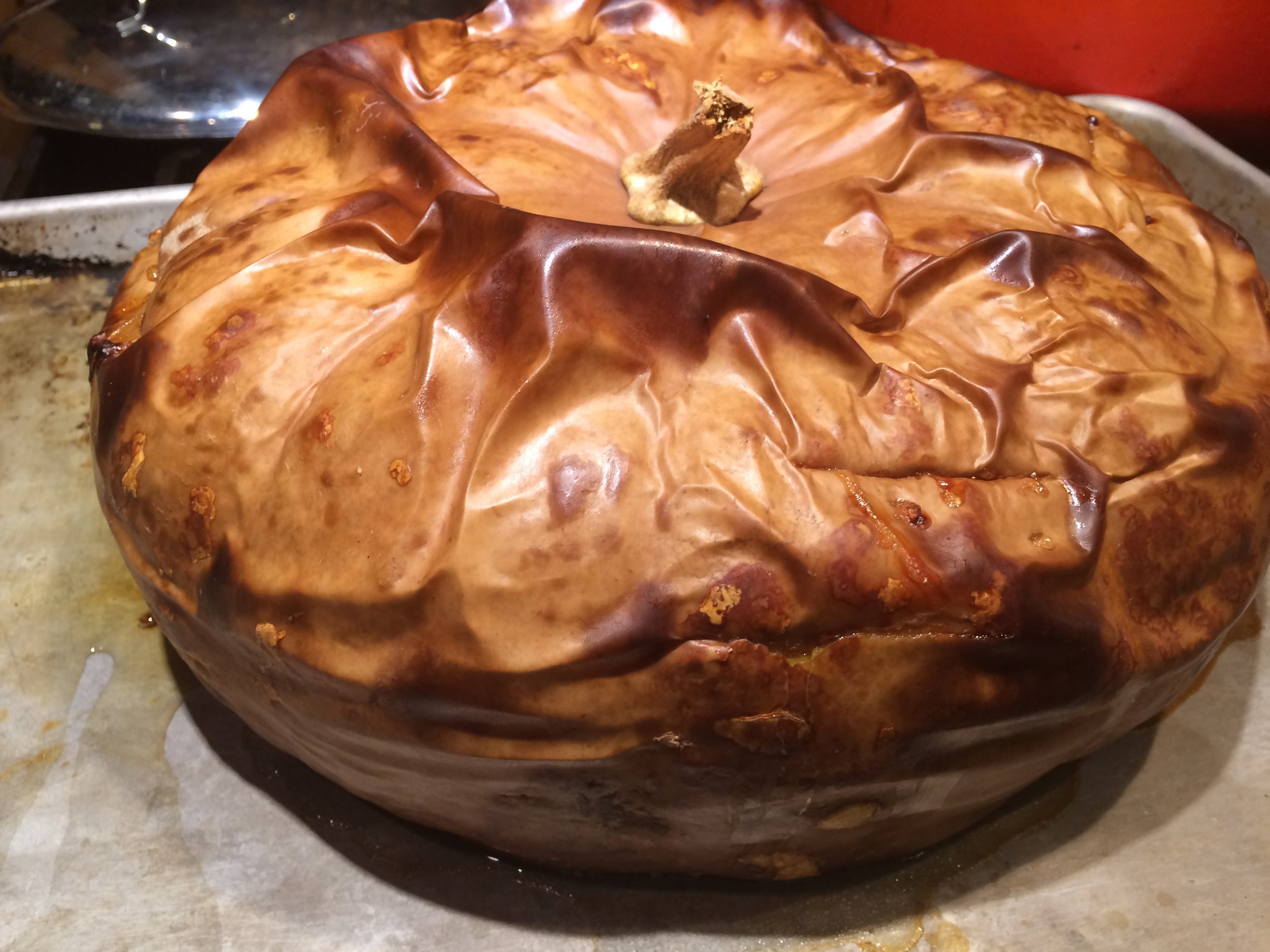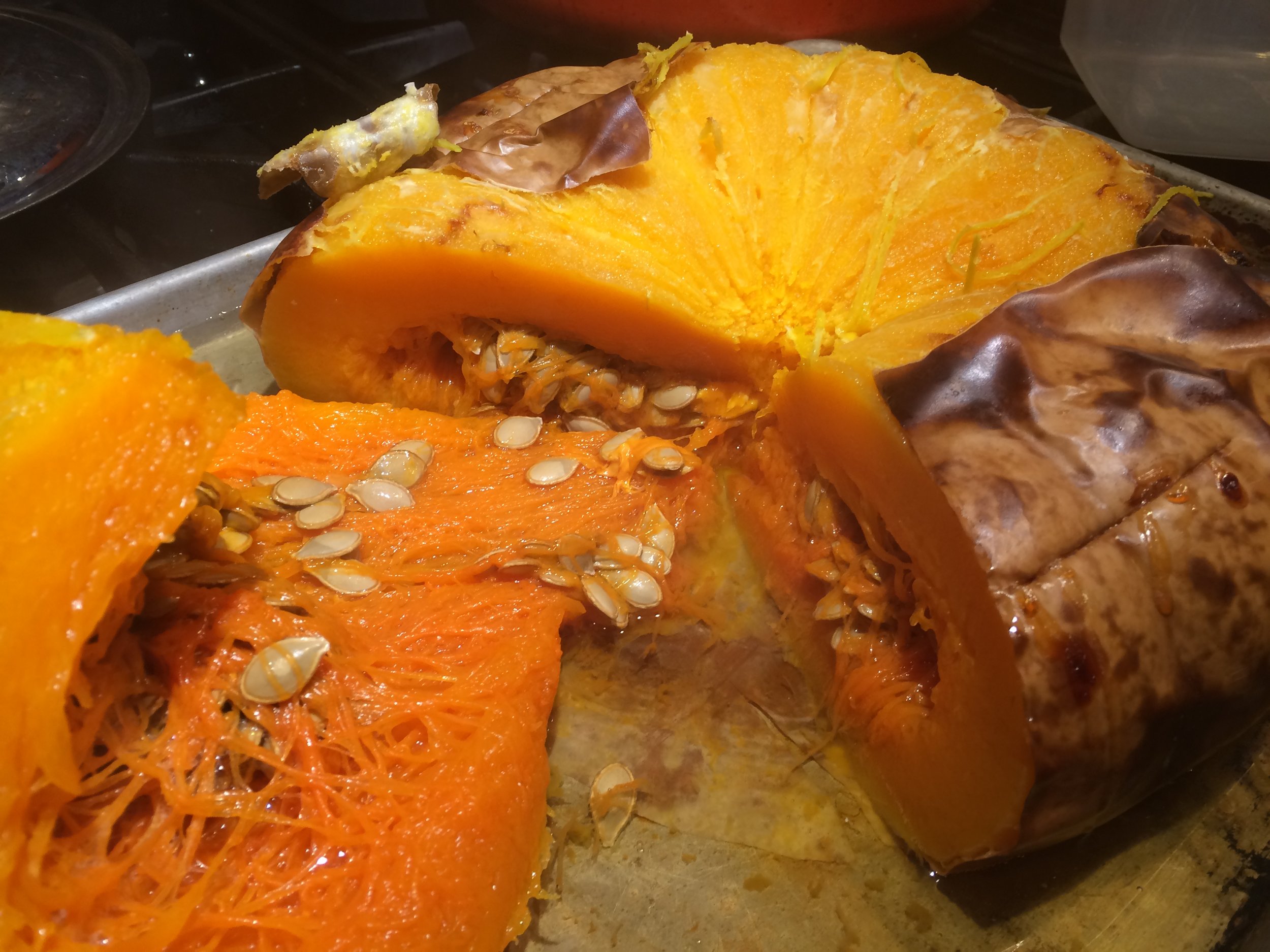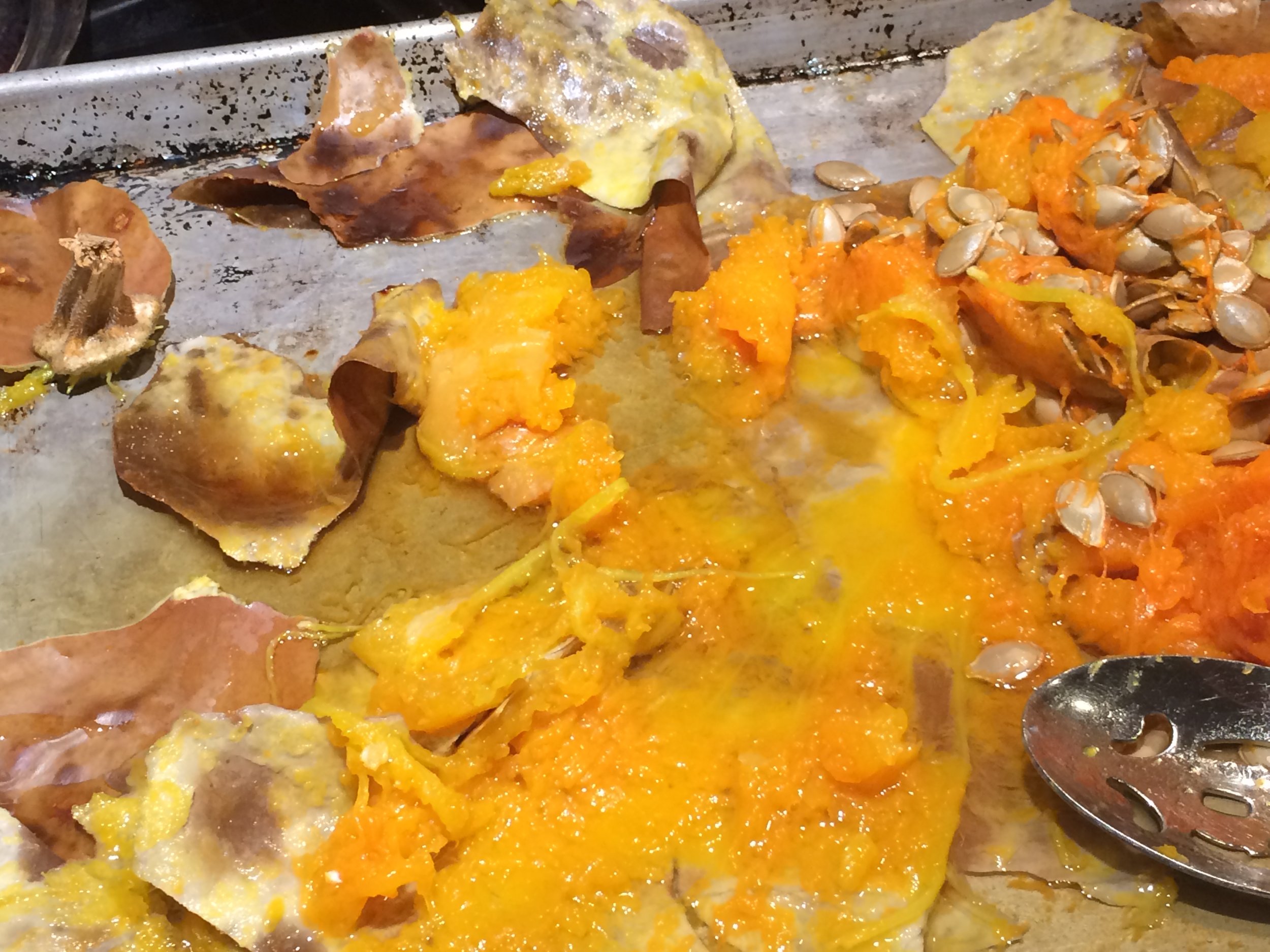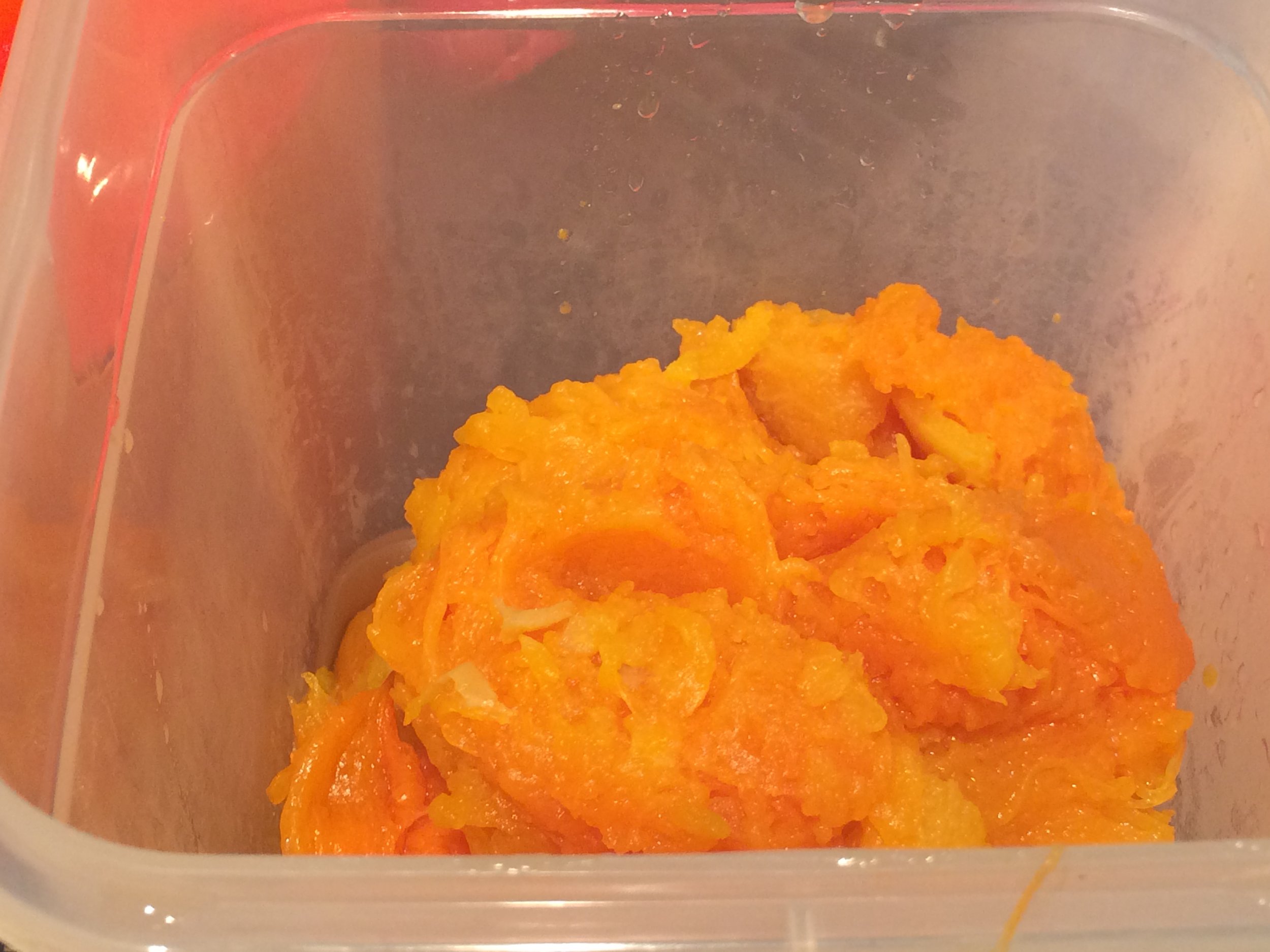A Tale of Two Pumpkins - A Qorkzgiving Tale
/A Cheese and a Sugar pumpkin by Gretchen Neuman for Qorkz.
Happy Qorkzgiving! Well, ok. It is a few weeks off, but the fact is that just like Rome wasn’t built in a day, a feast isn’t just whipped together. Not even Martha Stewart can pull off that trick. We at Qorkz have cooked a feast or two, so we thought that over the next couple of weeks to share our tricks of the trade and maybe a recipe or two. And wine? There will be wine.
Pie and Thanksgiving go together like peanut butter and jelly or wine and cheese (a perfect appetizer along with crudité, btw). And what kind of pie do we most imagine? Pumpkin. And why? Nothing is more American than pumpkin pie. No, no, you say, that isn’t right! Nothing is more American than apple pie. Nope. Why? Apples.
The apples native to North America are crab apples which are hard and sour. Any juicy delicious apple for a pie came from Asia via European settlers. And Johnny Appleseed? That dude randomly planted apple seeds ahead of settlements to provide settlers with fruit certainly. But settlers never knew what kind of apple they were going to get. It wasn’t like going to the local nursery and buying a tree by its variety. Why? Because every apple seed contains the entire genetic code of the species. Plant a seed from a Granny Smith could give you a Red Delicious… or more likely a crabapple. So scrap that.
Which leaves us the super delicious delightful and crazy healthy pumpkin pie. Making pie with an actual pumpkin instead of a can is super easy and makes you look like Martha F'ing Stewart. So do it! But first some gourdian facts. Pumpkins, like all squashes come from North America. All of them. So before 1492, Cinderella didn’t get to the ball in carriage made out of a pumpkin. And the Jack-o’-Lantern was usually made from a turnip or rutabaga (or swede as it is often called).
But enough Halloween nerdery, back to pie. Like apples, some varieties are better for making pie. Baby pumpkins will not work. Big carving pumpkins? They can do the job but only if they are thick and full of seeds. Thump them. If they sound kind of hollow? Skip them. Then there is the sugar pumpkin. A squash about the size of Chicago 16” softball… with a stem. These are good choices because they are dense with more wall than gut. They have less pronounced ribs making them easier to handle. Heirloom pumpkins are another way to go. With names like “Cinderella,” “Cheese, “Jarrahdale” or Marina di Chiogga, these pumpkins look a little odd, but were bred for their flavor. They were not generally sold as whole fruits, but rather in slices in the places that they came from.
I am going to show you’ll two pumpkins and two ways to cook them. The first, is a Cheese Pumpkin. Named thusly because it looks like a wheel of cheese. It is a big squash. I had to put this one under my arm when I brought it in. This is only of those babies that was sold in slices. The slice would be deseeded then roasted. I, however, have a whole version. This means I could cut it up and roast the individual pieces, but these pumpkins are hard to cut up unless of course you have one of those knives that cheese mongers tend to have around. I don’t. So, while I am roasting this big boy, I am doing it in the cheating kind of way.
Put your pumpkin onto a baking sheet. The kind with sides on it. Trust me. Then put 4-5 cuts into the fruit. All around. This cut should go deep into it. You will feel when you reach the more hollow center. That is your sweet spot. Then pop it into a 325 degree oven and roast it for about 90 minutes or until done. It will start to smell like cooked squash, which of course it is. The cuts allow steam from the pumpkin to be released, which you want unless you desire being hit by scalding exploding pumpkin when you open the oven. This would be very bad and quite embarrassing to explain at the Emergency Room. Turn off the oven and let the pumpkin cool. For at least an hour but trust me it will be longer. In fact. Go ahead and cut it into quarters. Juice will run free. This is ok. Then separate the quarters from each other. This will help it cool faster. Voilá! Cooked pumpkin. Just scrape out the seeds, then put the cooked flesh into a bowl. But really. Wait until it is cool to do this.
Next up is the Sugar Pumpkin. It is small and easy to handle. You could use the same method described above…. or…… You can cook this one super fast. At least when compared to the big Cheese. The first thing you do is, again, stab the pumpkin all around. A much easier task given its size. Then place it on a plate and place it in the microwave. Obviously, the plate will have to be microwave safe but that usually isn’t a problem in a modern household. Set the timer for 5 minutes at high and let her rip! It won’t be done in the first 5 minutes but rather it gives you the opportunity to check to progress every five minutes or so. As it begins to soften up, put the timer on progressively short times… When it is done, you treat it exactly like the big pumpkins above. Cooling times are shorter, obviously.
Wine pairing: Whatever gives you pleasure. You are drinking this while you prepare this fruit. You deserve bragging rights for starting with a whole pumpkin. Make sure people know. They will be impressed. Trust me.
Next up? Making the Dessert….







